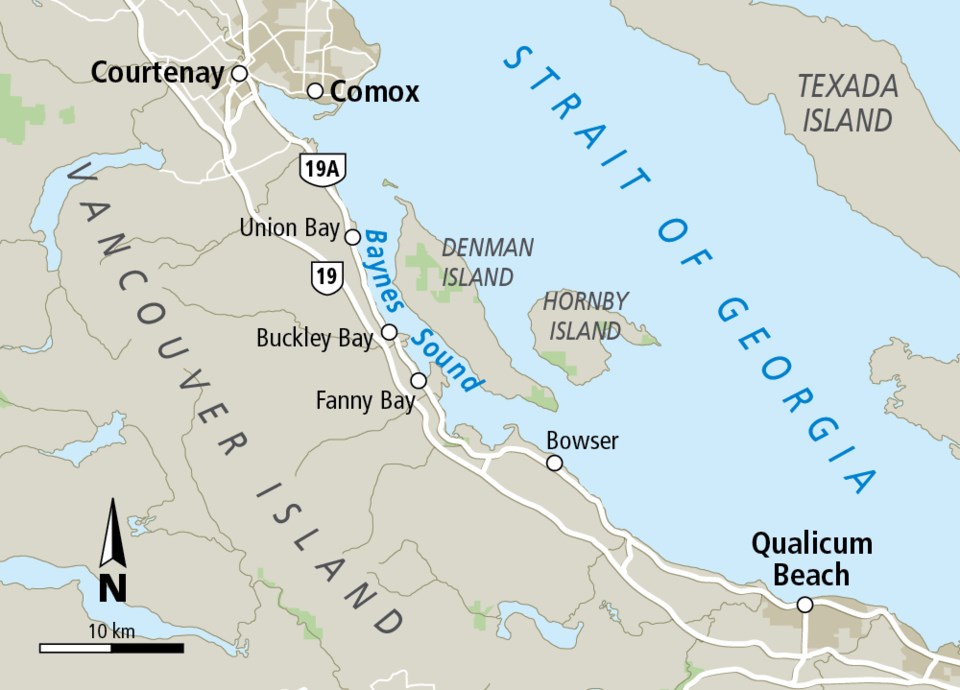A norovirus outbreak linked to people eating raw oysters from farms in south and central Baynes Sound has hurt B.C.’s entire shellfish industry, a growers’ association said Wednesday.
Federal officials closed four farms as a precaution after the outbreak began in early March.
But despite the fact the illness was traced to a limited geographic area, all B.C. growers have felt the effects of public health warnings, said Darlene Winterburn, executive director of the B.C. Shellfish Growers’ Association.
“The unfortunate reality is that there was some broad media that basically said, ‘Don’t eat B.C. oysters,’ ” she said. “Unfortunately, those sweeping comments had an impact on everybody in the industry. So we have a lot of farmers right now that are down 50 per cent in their sales.”
Winterburn said the warnings scared off restaurants, distributors and others. “It was a little bit of everything,” she said.
One of the complicating factors is that distributors and suppliers might have stored oysters received from the four affected farms before they closed, the B.C. Centre for Disease Control said in a statement last week.
“Recent illnesses have been linked to product served after the farms closed and ceased shipping product,” the centre said. “Restaurants and retailers must not distribute or serve oysters from these farms.”
The centre stressed that all other B.C. shellfish farms are open and that raw B.C. oysters continue to be available for purchase in restaurants and stores.
The Public Health Agency of Canada said last week that the outbreak appears to be slowing.
The agency said 172 cases of gastrointestinal illness linked to eating oysters have been reported to date — 132 in B.C., 15 in Alberta and 25 in Ontario. People became sick from mid-March to mid-April.
The U.S. Food and Drug Administration announced this week that it’s also investigating a multi-state outbreak of norovirus illnesses linked to oysters from the same area of Baynes Sound.
Norovirus causes vomiting and diarrhea for up to three days and can lead to dehydration in the very young and elderly.
Winterburn said one of the problems with this year’s outbreak is that it follows a more widespread outbreak in late 2016 and early 2017 that closed 12 oyster farms before it concluded.
She said a consultant, hired by the association, estimated that the 2016-17 outbreak cost the industry about $9.1 million or 20 per cent of its annual sales.
“The financial impact of this year’s outbreak, following as it is on the heels of the last outbreak, could reach the same levels of loss,” she said.
“Easily it’s going to be estimated in the millions of dollars.
“And we’re dealing with a lot of small businesses, and they can’t continue to get hit like this.”
Winterburn said the main message is that British Columbians need to pay attention to what they’re putting in the water.
The B.C. Centre for Disease Control figures that last year’s outbreak was caused by human sewage that contaminated the marine environment.
Investigators are still investigating the cause of this year’s outbreak; Winterburn said they’re “getting closer” to pinpointing the source.
“The oysters, of course, are not sick in any way, shape or form,” she said.
“They’re telling us something and what they’re telling us is we’ve got to start watching our water quality and what we’re putting into our oceans.”



